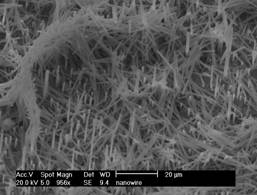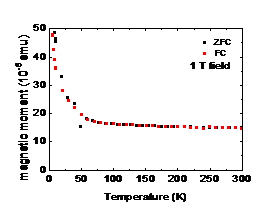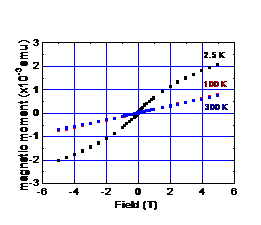PREPARATION AND PROPERTIES OF TRANSITION METAL DOPED ZnO NANOWIRES
E. Matei, M. Sima, I. Enculescu, M. Sima, R. Neumann, S. Granville, J.P. Ansermet
ECS Transactions / Volume 16 / Issue 12 / Material Growth and Characterization
pp. 41-46, ISSN: 1938-6737
We employed template replication by electrochemical deposition as the technique to prepare transition metals doped zinc oxide nanowires. Polycarbonate nanoporous membranes obtained by swift heavy ions irradiation and subsequent etching were used as templates. The pores were filled with the desired material by electrochemical deposition from an aqueous bath. Thus, ZnO nanowires with Mn content of up to 5% and copper content of up to 10% or cobalt content of up to 5% were obtained. The properties of the nanowires were investigated by scanning electron microscopy, energy dispersive X ray analysis and optical spectroscopy (absorption and luminescence).
We investigated the effect of preparation condition (i.e. deposition potential, deposition bath composition, temperature) on properties such as morphology, structure or composition of the nanowires.
 |
 |
(a) |
(b) |
Figure 1. (a) Array of cobalt doped ZnO wires electrodeposited from a nitrate bath; (b) Co content as a function of deposition potential
Results of SEM investigations and of the EDX analysis are presented in figure 1. One can notice that high quality wires are produced, cylindrical, with smooth walls and dimensions corresponding to those of the template. As an example, for cobalt doped ZnO nanowires we found that dopant concentration can be easily varied just by tuning the deposition potential. Such a behaviour can be exploited in order to prepare multisegment doped – undoped nanowires.
 |
 |
(a) |
(b) |
Figure 2. The variation of magnetic moment as a function of temperature (a) and as a function of magnetic field (b) for an array of nanowires containing 10% Cu and 4% Mn.
In figure 2 we plotted the variation of the magnetic moment as a function of temperature and as a function of magnetic field at different temperatures for an array of Mn and Cu doped nanowires. The behavior, similar to the one measured for all the samples in the mentioned composition range is typical for a paramagnetic material. The major advantage of the electrochemical deposition as a preparation technique for diluted magnetic semiconductors is the low preparation technique, the magnetic measurement proving the good dopant dilution in the host matrix.
Thus, Zn 1-x M x O (with M = Co, Cu, Mn) nanowires were prepared by electrochemical deposition in ion track nanoporous membranes. The method allows the fabrication of such nanostructures with a precise control of morphology and dimensions. Moreover we demonstrated that the metal content can be easily tuned just by varying the applied overvoltage.
A paramagnetic behavior was observed for all the samples measured.
CENTRUL NATIONAL DE MANAGEMENT PROGRAME – CNMP
Programul 4 – Parteneriate in domeniile prioritare